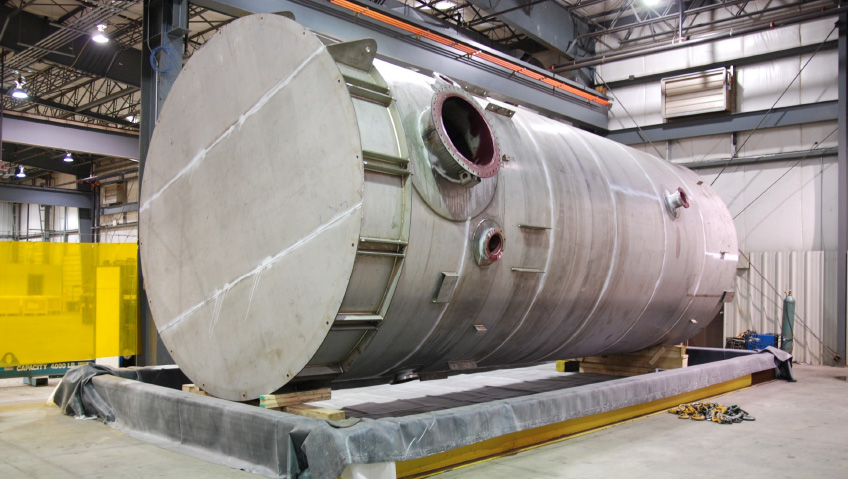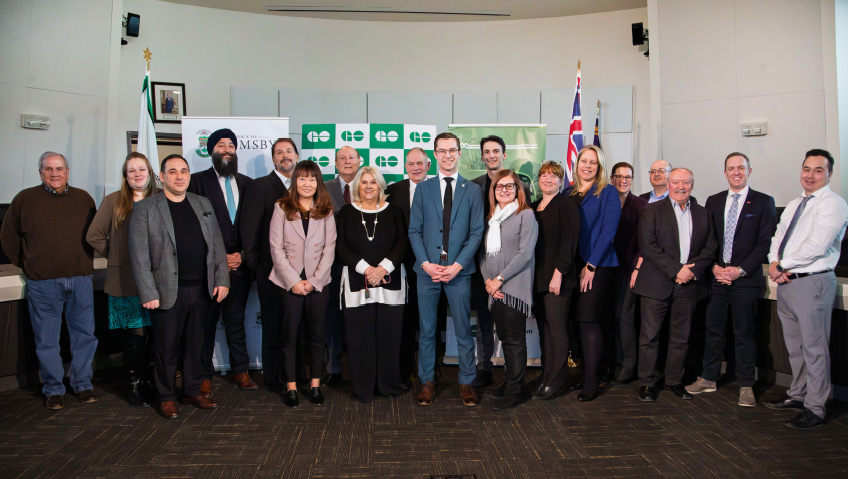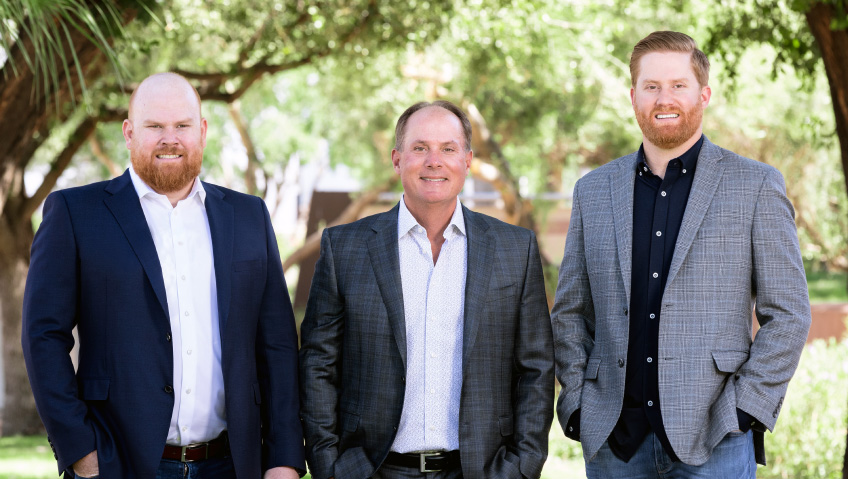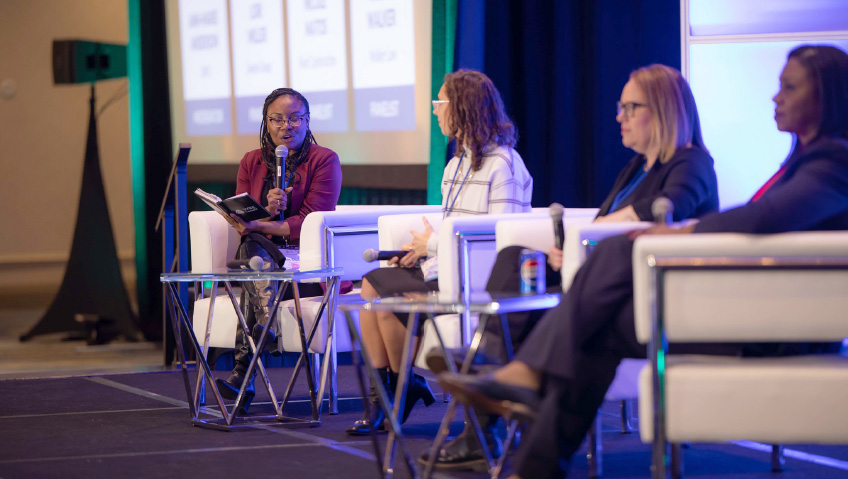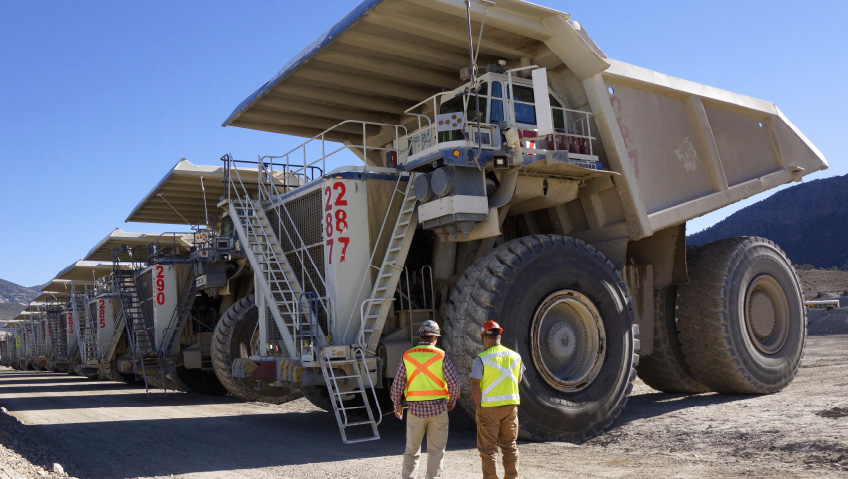Asked what he wants people to know about the city of Sioux Falls, South Dakota, Bob Mundt, President and Chief Executive Officer of the Sioux Falls Development Foundation (SFDF), is quick to reply.
“We want people to know that Sioux Falls is a thriving community,” he says. “The city may not be as well-known as others or on someone’s radar, so we want people to know this is a great place to do business and raise a family.”
The area was once inhabited by the Lakota and Dakota peoples, who hunted bison. The cascades on the Big Sioux River (aka The Falls) attracted the notice of early explorers, including Lewis and Clark. Settlement began in the 1850s, and the community grew to 593 residents by 1873. Railroads led to explosive expansion, as the population soared from 2,164 residents in 1880 to over 10,000 within a decade. The arrival of interstate highways in the 1960s continued to drive growth, with the population topping 100,000 people by 1990.
Located in southeast South Dakota near several major transportation routes, the city today enjoys low unemployment, affordable housing, strong public, private, and post-secondary education systems, and a comprehensive healthcare network. The biggest city in South Dakota, it has around 220,000 residents—while the Sioux Falls Metro area has a population of over 316,000—and is growing at a rate of 4,000 to 6,000 people per year.
Sioux Falls is “a big city with a smalltown feel,” says Mundt. “We attract businesses and people here because of the quality of life paired with our cost of living and the safety component that we have. Companies can thrive here. We have a hard-working [labor force] that’s willing to put in the time to be successful.”
Indeed, the city has recently experienced a surge of economic, residential, and commercial growth. Foundation Park, for instance, is a 980-acre industrial zone established in 2015 near rail lines and interstate highways. Billed as “South Dakota’s first mega-site,” by the SFDF, Foundation Park counts Amazon, FedEx, and a range of manufacturers, warehousing operations, and other businesses as tenants. Sites are still available for companies looking to locate here.
The lure of plentiful, shovel-ready land—Foundation Park features well-established utilities infrastructure—is just one of the city’s attractions. The Sioux Falls Development Foundation offers negotiated pricing on its industrial land, while the city and state offer incentives and competitive utility rates. State-level initiatives include the South Dakota Reinvestment Payment Program, which gives reinvestment payments to companies that initiate projects valued at over $20 million or make equipment upgrades of at least $2 million. South Dakota is also a right-to-work state, meaning it is illegal to compel workers to join a union or deny employment to someone based on their membership or non-membership in a union. There is also no personal or corporate state income tax.
Sioux Falls is conveniently located at the crossroads of two interstates, I-29 and I-90, enabling easy north/south and east/west travel, respectively. Average commuting time is under 20 minutes. The Sioux Falls Regional Airport, already the largest in the state, might get even bigger in the near future. “We’re looking, in the next five to 10 years, at expanding our airport, expanding the capacity we have for both passenger air and also freight,” Mundt tells us.
As for what kinds of companies the city aims to attract, “We are targeting high-tech manufacturing,” he says. “We’re also targeting warehousing and distribution and looking at bio-tech industries, specifically [agricultural bio], areas of genetic engineering, biopharmaceuticals… We’re also looking most currently at cyber and cyber-security.”
Above all, Sioux Falls wants to work with businesses offering high-quality, high-paying positions. “If you’re looking to come here and pay people in the $12 to $13 an hour range, you’re not going to attract enough workers to fill your jobs,” says Mundt. “We make sure they understand they’re going to have to pay what it takes to get people.” Median family income in the Metro Sioux Falls area was $103,464 in 2023, while the per capita income was $46,368, according to U.S. Census Bureau figures.
Coupled with good wages is affordability. The city scored 91.0 on a cost-of-living comparison published by the Council for Community & Economic Research that tabulated and contrasted average food, housing, transportation, health, and utilities expenses in various cities. Denver, Colorado scored 108.6, Madison, Wisconsin scored 104.7, and Minneapolis, Minnesota came in at 93.6. Sioux Falls also boasts an abundance of new housing, as $6 billion worth of residential construction has taken place here since 2020, with over 15,000 new housing units built. The median home price in 2024 was roughly $330,000.
Over the past decade, the city’s labor force has grown by 14 percent, with unemployment in 2024 standing at a very low 1.8 percent. The city’s two major medical systems—Sanford Health and Avera Health—are also its top employers. Other leading employers include Amazon, Smithfield Foods, Wells Fargo, and Walmart/Sam’s Club. Thanks to its strategic location, Sioux Falls can draw workers from three states: South Dakota and neighboring Minnesota and Iowa.
Foundation Park is not the only big development here; Cherapa Place and the Steel District are two high-profile projects in recent years that have transformed the downtown core. “We’ve taken areas that were once industrial, downtown by the river, and transformed them into cities within the city,” explains Mundt.
Cherapa Place is a mixed residential, commercial, and office neighborhood featuring large building complexes and condominiums, while the Steel District, whose name pays homage to the area’s industrial roots, is a “live-work space, with commercial development, residential development, and high-end condos,” as well as the Canopy by Hilton Sioux Falls Downtown, a hotel with over 200 rooms.
In addition to the two large healthcare systems, the city hosts specialty hospitals and facilities focused on hearts, bones, and ophthalmology. “We get a lot of retirees—seniors that come here because of our healthcare system,” notes Mundt. In fact, the state of South Dakota was ranked number six amongst the best places to retire in America in 2025 by the website Seniorly.com, while earlier this year, WalletHub.com included Sioux Falls on its list of the top 25 safest cities in the U.S. based on crime rates, financial safety, and a limited potential for natural disasters.
The city is rich in educational opportunity, with the University of Sioux Falls and Augustana University, both private, based in the city, along with Southeast Technical College. The city is within an hour’s drive of three other major universities: The University of South Dakota in Vermillion, South Dakota State University in Brookings, and Dakota State University in Madison.
Cold winters and warm summers are the norm in Sioux Falls. January features a mean temperature of 17.9°F (-8°C), while the July mean is 74.4°F (23°C). The average annual temperature stands at 46°F (7.6°C) with an average annual snowfall of 42.5 inches. “If people move here from California or Southern states, certainly that first winter here is eye-opening to them,” Mundt shares.
But for all that, “we embrace our climate. We live in the upper Midwest, and we know we’re going to have four seasons, and that’s what we appreciate about being here. We know that spring, summer, and fall are kind of our ‘make hay’ months outside, if you will. We really do a lot of stuff during those months. [But we also] have tremendous winter activities. Some are outside; some are inside. We want to make sure that this is a year-round community,” he adds.
In winter, downhill and cross-country skiing, snowboarding, and tubing are hugely popular. During the warmer months, hiking, mountain biking, hunting, kayaking, fishing, and all manner of sports are big draws. The area boasts over 80 parks, 17 golf courses, four minor league sports teams—hockey, baseball, basketball, and soccer—three state parks, and four recreation areas.
The city also features an impressive zoo and Falls Park, which features the city’s famous waterfalls and is “kind of our signature area,” says Mundt. Levitt at the Falls offers free concerts throughout the summer and hosts other arts events throughout the year. “If you need something to do on a weekend and you can’t find something, you’re not looking very hard,” Mundt laughs.
In terms of getting the city’s name out, Experience Sioux Falls, the city’s convention and visitors bureau, “does a really good job,” promoting the area to tourists, visitors, and convention goers, he says. The SFDF, meanwhile, is responsible for highlighting business opportunities for companies and job opportunities for individuals. The Foundation achieves this through a robust social media presence and by attending trade shows.
Looking to the future, city officials want Sioux Falls to continue growing—but in a responsible way, says Mundt. This means making plans for future infrastructure and services to accommodate new residents and businesses.
Within a few years, he would like to see Sioux Falls “in that 300,000 to 350,000-person range. We’d love to have more advanced manufacturing companies here creating high-quality jobs.” We look forward to seeing where this city’s evolution takes it next.


